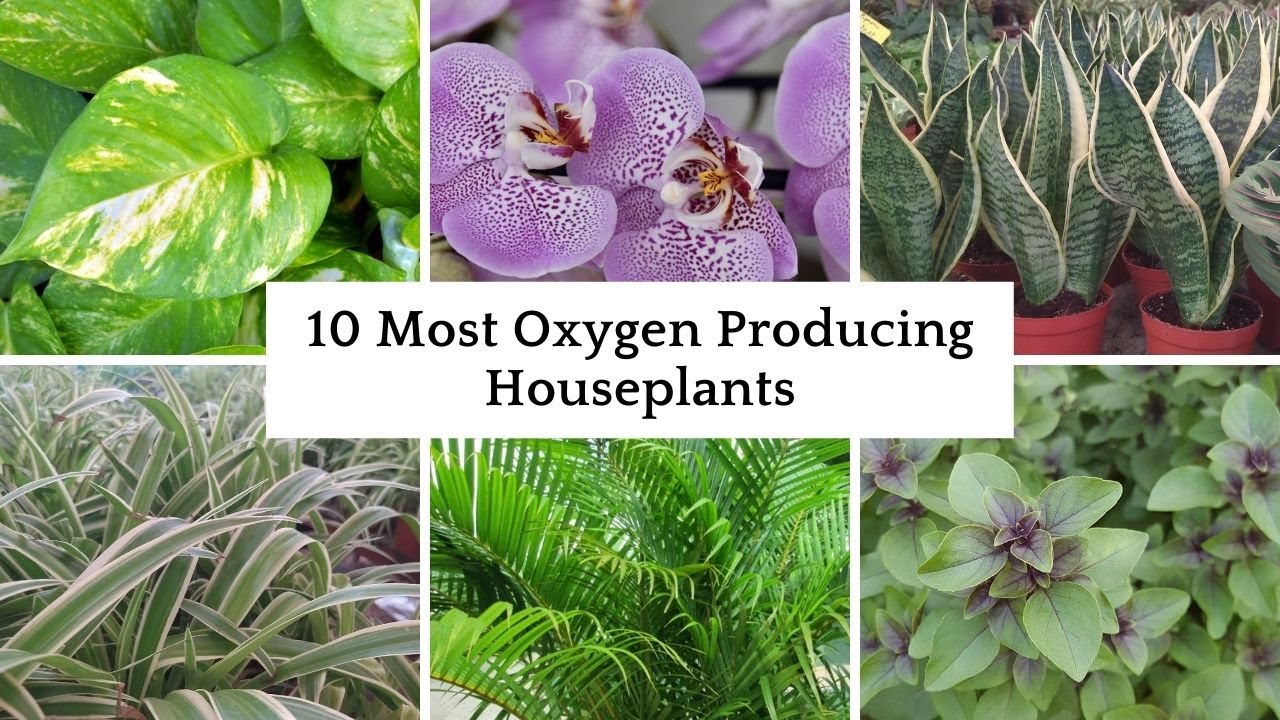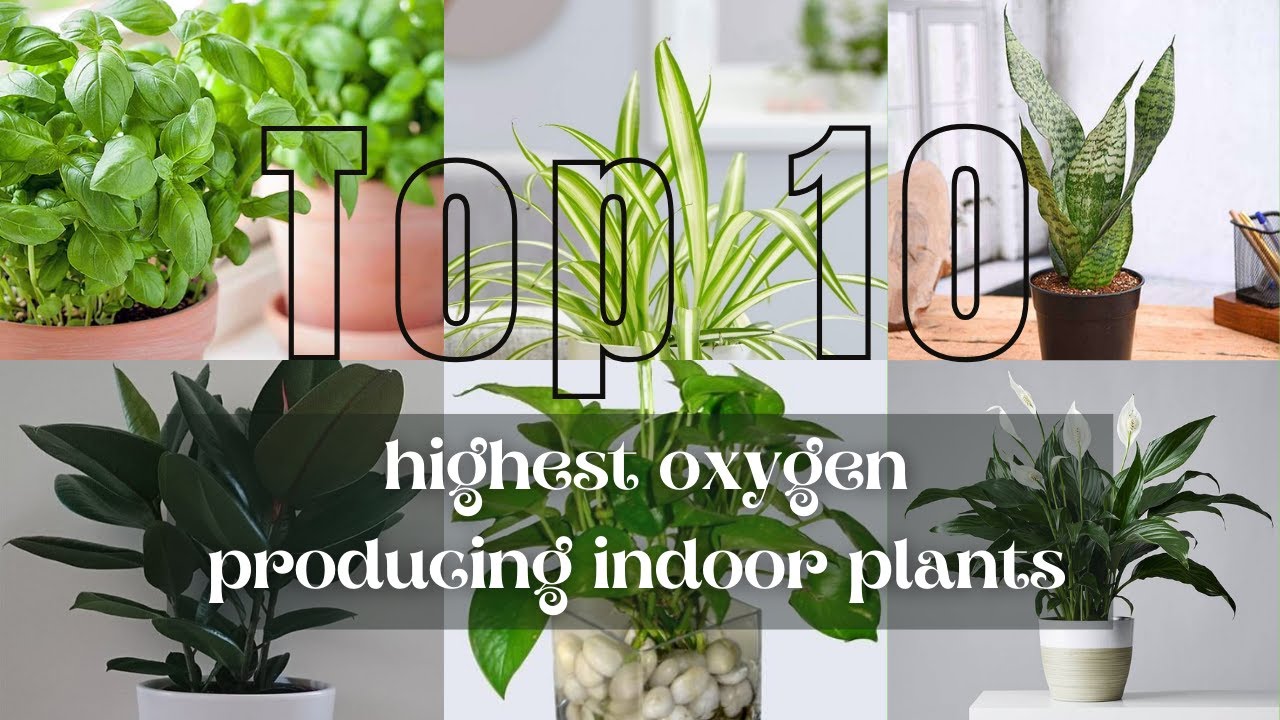Indoor plants aren’t ornamental elements that can bring a natural look to your home. They’re air purifiers, which can alter the air quality in your home. Beyond their attractive appearance, indoor plants play a vital part in enhancing the quality of air by releasing oxygen and eliminating harmful toxins in the environment.
In the wake of rising concerns about indoor air pollution and poor air circulation, a lot of homeowners are looking to plants to create a fresher more healthier, and more comfortable living environment. Selecting the best indoor plants to help with oxygen will help you to maintain an environment that is cleaner while bringing beauty and life to your living spaces.
The plants naturally improve the air quality you breathe. Photosynthesis is the process by which they take in carbon dioxide and then release oxygen. This helps to ensure a healthy and healthy indoor environment.
Certain species, including the Snake Plant, Areca Palm, Aloe Vera, and Peace Lily, are renowned for their capacity to release oxygen throughout the night, which makes them perfect for study and bedroom spaces. Apart from purifying the air, indoor plants can also regulate the humidity and help lower dust particles in the air, thereby improving the health of the respiratory system.
For those who spend a long time indoors, particularly in closed or air-conditioned spaces, incorporating oxygen-producing plants can help create a vibrant and energetic atmosphere. The most effective indoor plants to oxygenate do more than cleanse the air, but also aid in mental health by decreasing anxiety and boosting mood.
The care of indoor plants is easier than people believe. Every plant comes with its specific set of instructions for care. Some thrive in bright light, and some prefer less light. The timing of watering, the soil quality in the potting area, and the humidity levels are crucial to the growth of their plants. In particular, some plants, such as the Money Plant as well as the Spider Plant, require minimal attention, which makes them ideal for novices, whereas palms and ferns require slightly more attention. If you choose plants that complement your home’s environment and lifestyle and lifestyle, you can easily keep a cleaner and greener home. This guide will guide you through the best Indoor Plants for Oxygen and their incredible health benefits, as well as simple maintenance techniques that will help transform your house into a serene and eco-friendly oasis that is that is filled with fresh air and natural beauty.
Why Choose Oxygen-Producing Indoor Plants?
Photosynthesis is a natural process that plants use to convert carbon dioxide (CO2) into oxygen. Indoor plants that are especially efficient in this process can also remove harmful pollutants from the air, such as formaldehyde and benzene. You can improve the air quality in your home by adding these plants. They also increase humidity and make it more vibrant.
Top Ten Indoor Plants that Boost Oxygen Levels
1. Snake Plant (Dracaena Trifasciata).
Snake Plant, also known as Mother’s Tongue or Mother-in-Law’s Tongue, is ideal for bedrooms because it produces oxygen at night. Low-maintenance, it thrives even in low-light conditions.
Care Tip:
Allow the soil to dry out between waterings.
Allowing low-to-bright indirect light.
2.Areca palm (Dypsis laucescens)
The Areca Palm is not only a beautiful tropical addition to your home, but it also functions as an air purifier and humidifier. It is effective in removing toxic substances like formaldehyde, benzene, and other toxins.
Care Tip:
Prefers bright, indirect sunlight.
Keep the soil moist, but not soggy.
3. Peace Lily (Spathiphyllum wallisii).
Peace Lilies have white flowers and are known to purify the air. They can remove pollutants like ammonia and benzene and increase oxygen levels.
Care Tip:
Low to medium light is ideal.
4. Pothos (Epipremnum aureum)
Pothos is an excellent vine for beginners. It is effective in increasing indoor air quality and removing pollutants.
Care Tip:
The adapter can be used in a variety of lighting conditions, including low indirect light to bright indirect light.
When the soil is dry, water it.
5. Aloe Vera, also known as Aloe barbadensis Miller
Aloe Vera has many medicinal benefits, but it is also a powerful air cleaner that releases oxygen at night. This makes it ideal for bedrooms.
Care Tip:
Requires bright, indirect sunlight.
Allow the soil to dry between waterings.
6. Weeping Fig (Ficus benjamina)
Weeping fig is a popular indoor plant that removes toxins from the air, such as formaldehyde or benzene.
Care Tip:
Prefer bright indirect light.
Keep the soil moist, but not flooded.
7. Spider Plant (Chlorophytum comosum)
Spider plants are easy to cultivate and remove pollutants like carbon monoxide or xylene.
Care Tip:
Bright, indirect light is best.
Do not allow the soil to dry completely.
8. Philodendron
Philodendrons, with their heart-shaped foliage, are excellent at filtering air pollutants like formaldehyde.
Care Tip:
Prefer medium to bright indirect lighting.
When the soil is dry, water it.
9. Dracaena Margata
Dracaena is a stylish plant that can remove pollutants like xylene and formaldehyde.
Care Tip:
Prefer filtered light
Let the topsoil dry before watering.
10. Bamboo Palm (Chamaedorea seifrizii)
Bamboo palms are great air purifiers that add greenery and a bit of color to any room. They are especially good at removing formaldehyde and benzene.
Care Tip:
Bright, indirect light is best.
Keep the soil evenly moist.
Best Indoor Plants For The Bedroom
Consider adding these oxygen-producing houseplants to your bedroom for a good night’s rest.
Snake Plant Releases oxygen during the night and needs minimal care.
Aloe Vera: Produces oxygen at night and has soothing qualities.
Peace Lily: Increases moisture and filters harmful toxins.
Spider Plant – Removes pollutants, and is safe for pets.
These plants can help create a more peaceful and healthy sleeping environment.
Tips to Maximize Air Purification
How to get the best out of indoor plants
Quantity is Important: At least one plant should be planted per 100 square feet.
Placement: Plants should be placed in the areas where you spend most of your time.
Regular Maintenance: Maintain leaves free of dust to promote photosynthesis.
Do not overwater. Excessive water can cause root rot, mold, and other problems.

Final Thoughts
It is easy to improve the air quality in your home by incorporating indoor plants that produce oxygen. There are many plants that will suit any lifestyle and needs, whether you’re an experienced plant enthusiast or just a beginner.
Visit our blog at Soil and Sprout for more information on indoor plants.

Chavan Harikrishna is a dedicated content writer with a strong passion for agriculture and gardening. With a keen eye for detail and a love for nature, he creates insightful and engaging content that educates and inspires readers about sustainable farming practices, plant care, and rural development. Harikrishna combines his writing expertise with hands-on experience in agriculture to deliver well-researched and impactful articles that promote a greener and more sustainable world.
